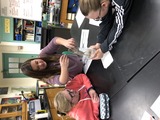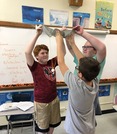
Lesson Length: 1-2 hoursGrade Level: 6-8Students build a water filter with a variety of natural and commercially produced materials. First they test the materials and then choose which to layer together themselves based on material performance. Students learn about water resources and engineered supports for the earth’s water systems and the impacts on environmental and human health. Engineering connections are highlighted throughout the lesson. Special thanks to Giles County, VA STEM Coordinator, Christina Martin, whose unit on The Global Water Crisis was the inspiration for this lesson. Also thanks to the NASA Water Filtration Challenge (https://www.jpl.nasa.gov/edu/teach/activity/water-filtration-challenge/) that helped guide Christina in the development of her lesson.This material is based upon work supported by the National Science Foundation under Grant No. 1657263. Any opinions, findings, and conclusions or recommendations expressed in this material are those of the author(s) and do not necessarily reflect the views of the National Science Foundation.
- Subject:
- CTE
- Career Connections
- Cross-Curricular
- Earth Resources
- Living Systems and Processes
- Professional Learning
- STEM/STEAM
- Science
- Scientific and Engineering Practices
- Technology Education
- Trade and Industrial
- Material Type:
- Activity/Lab
- Interactive
- Lesson
- Lesson Plan
- Visual Media
- Author:
- VT PEERS
- Date Added:
- 11/13/2020
